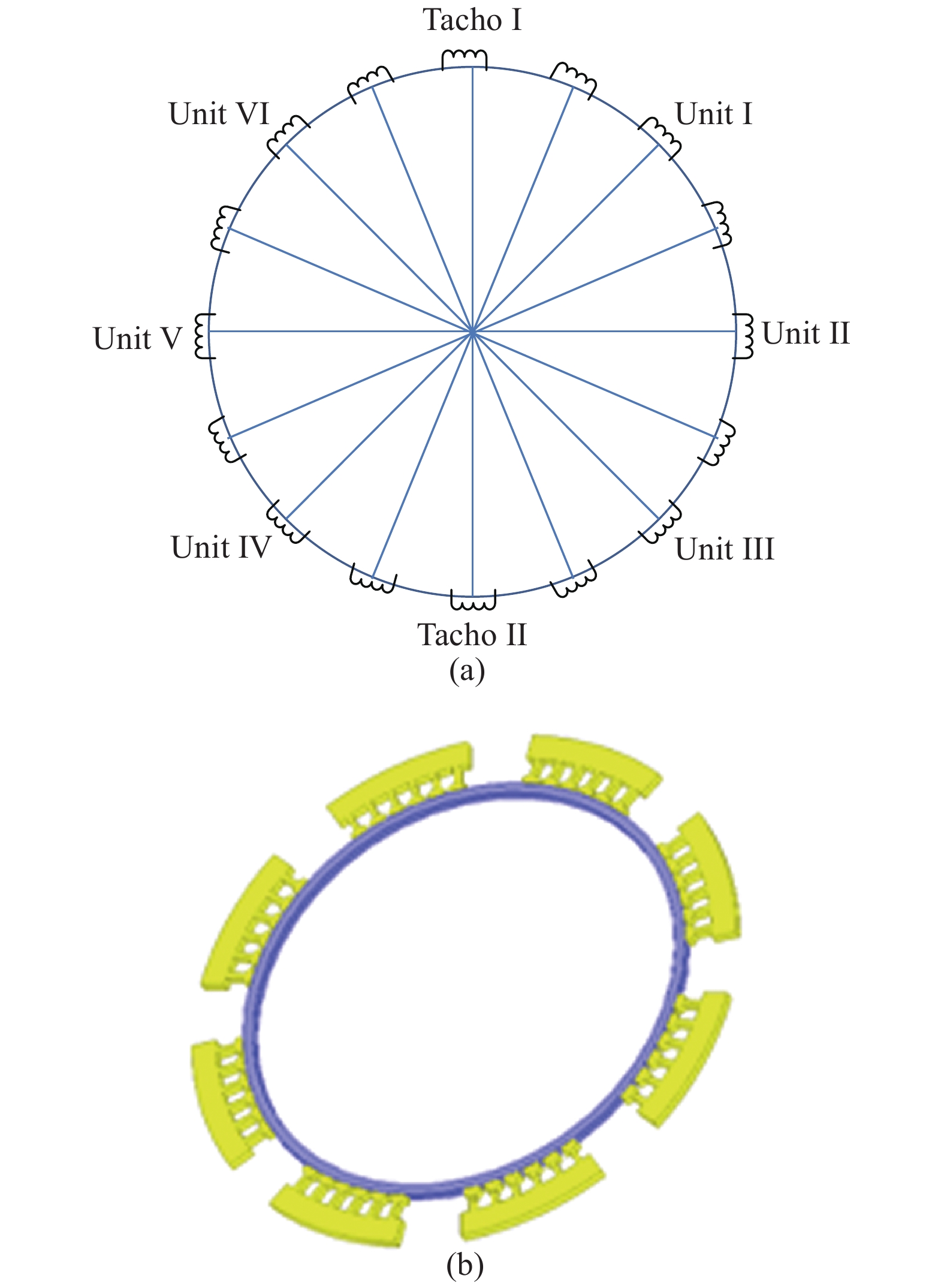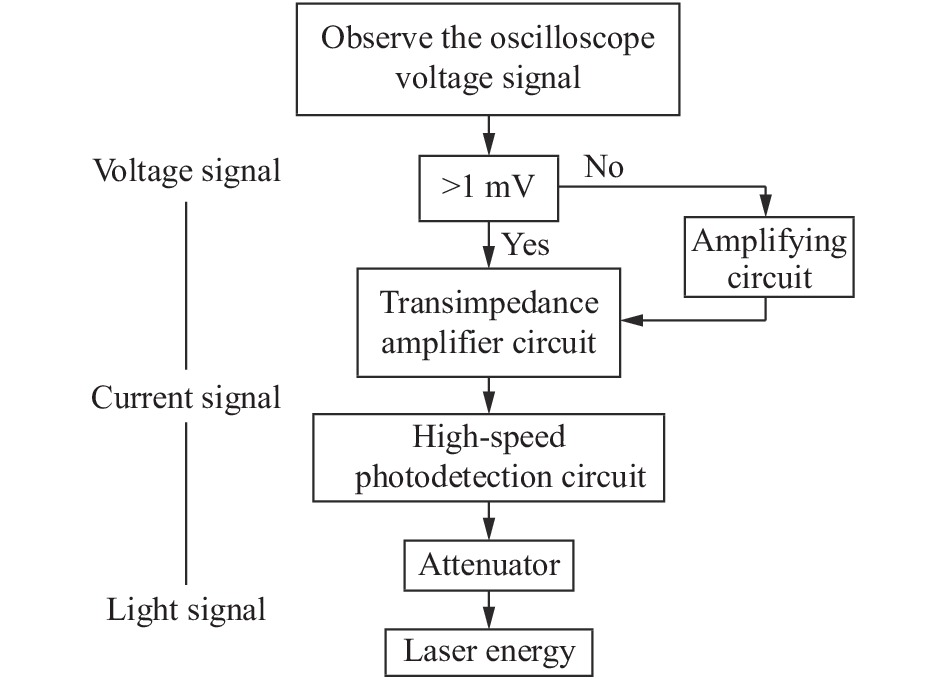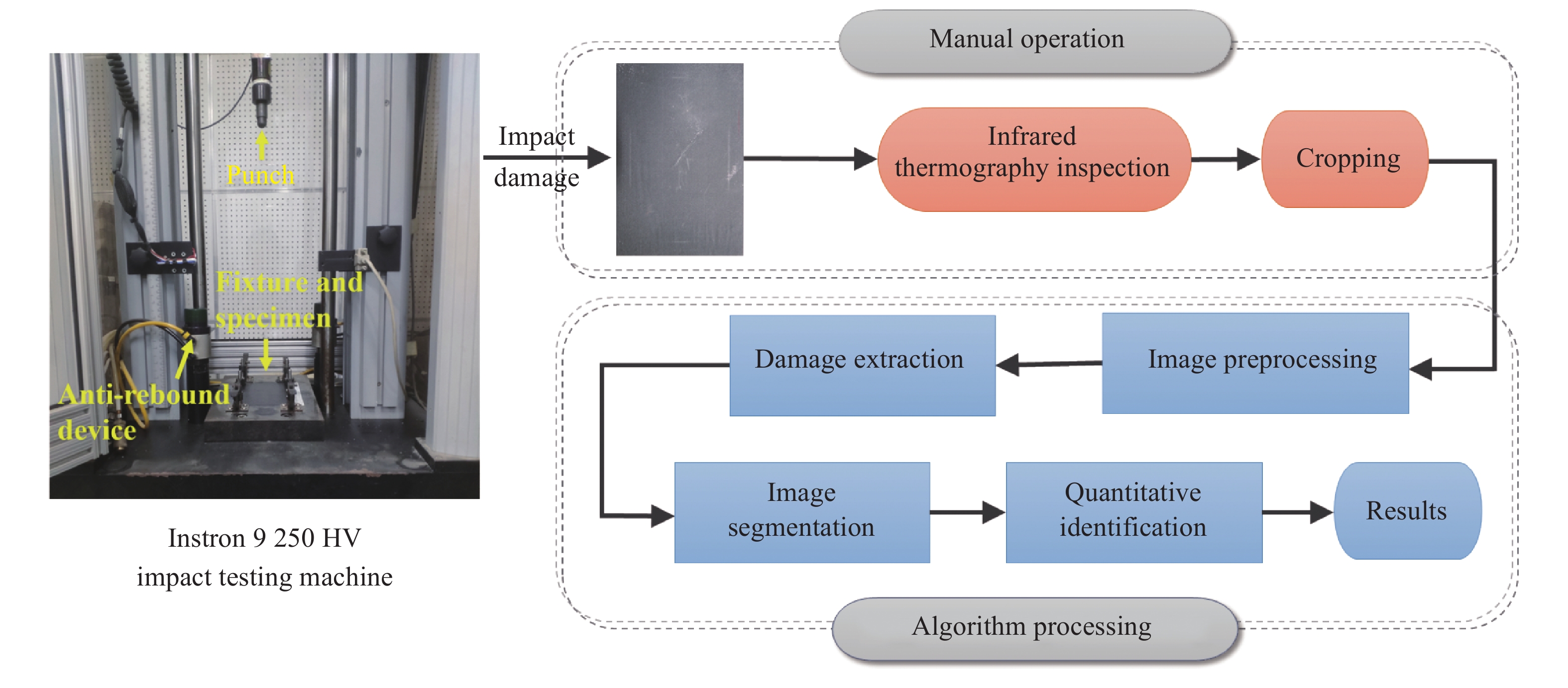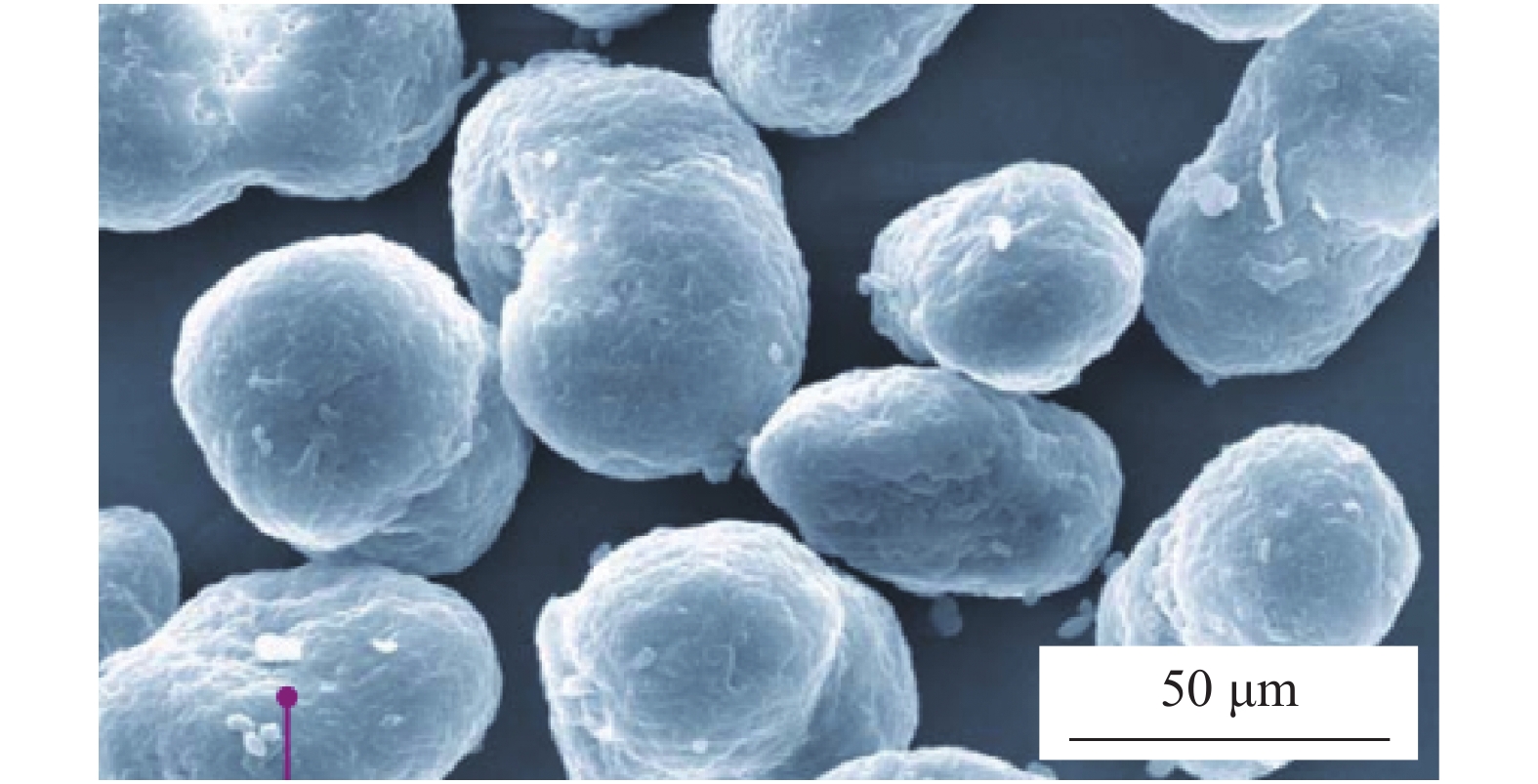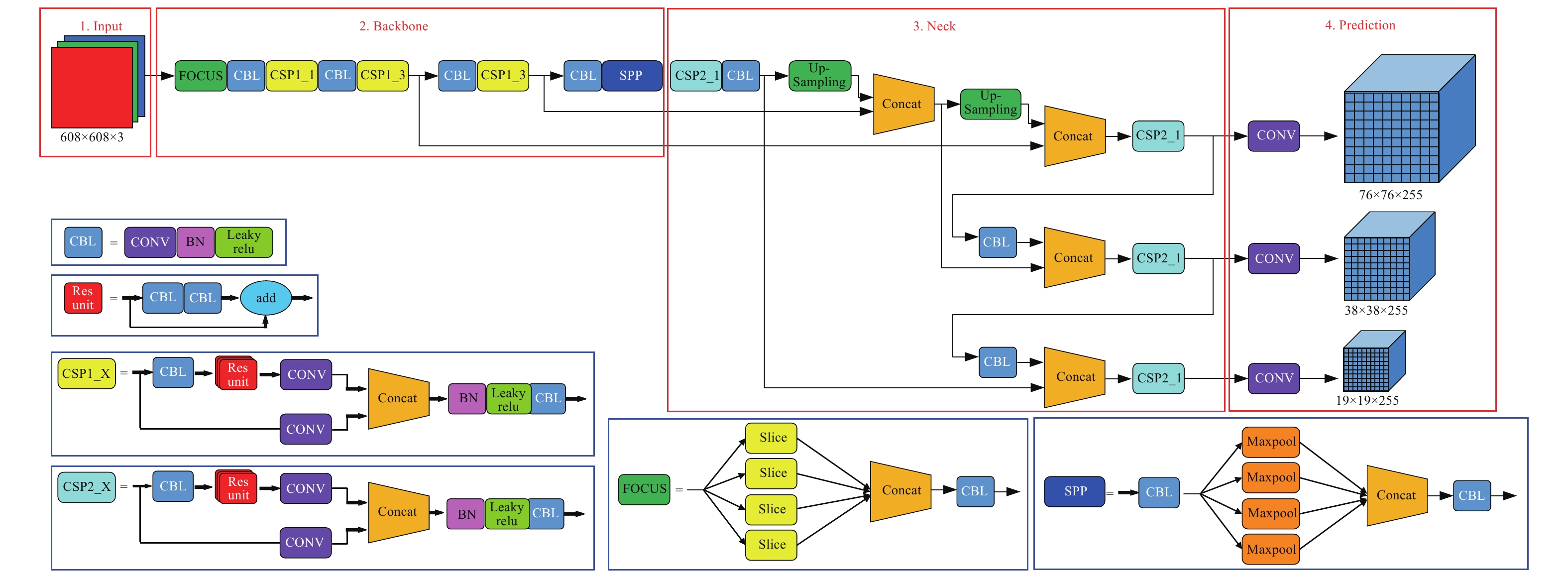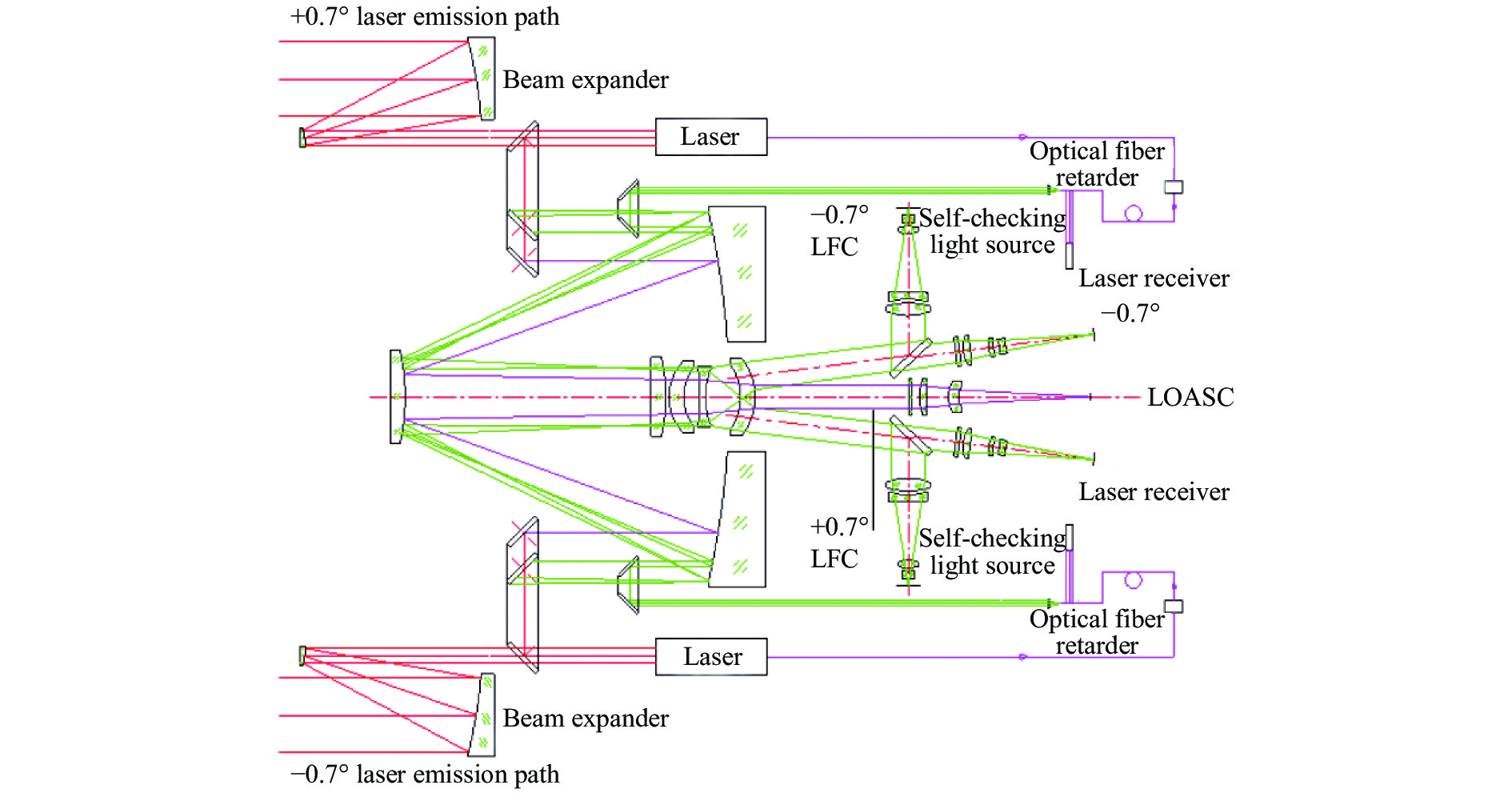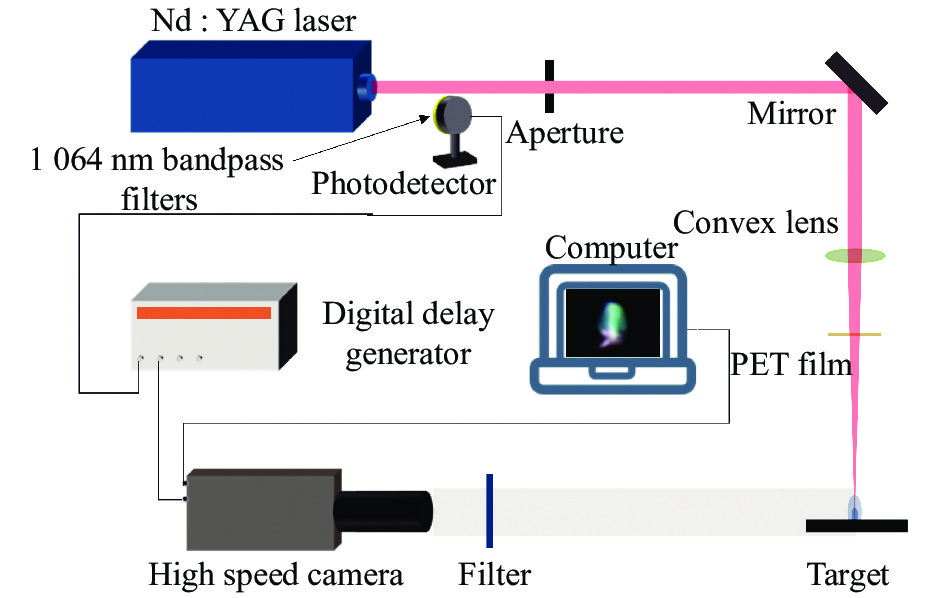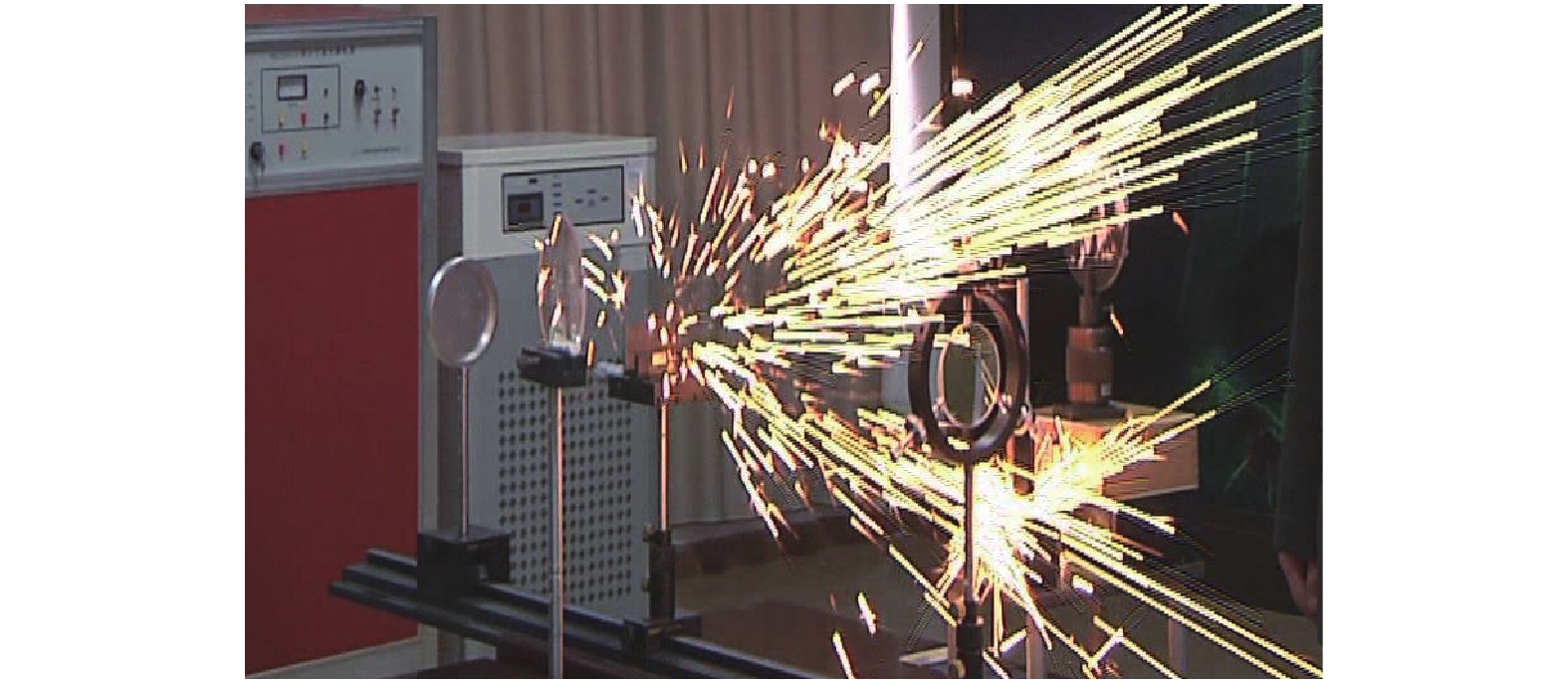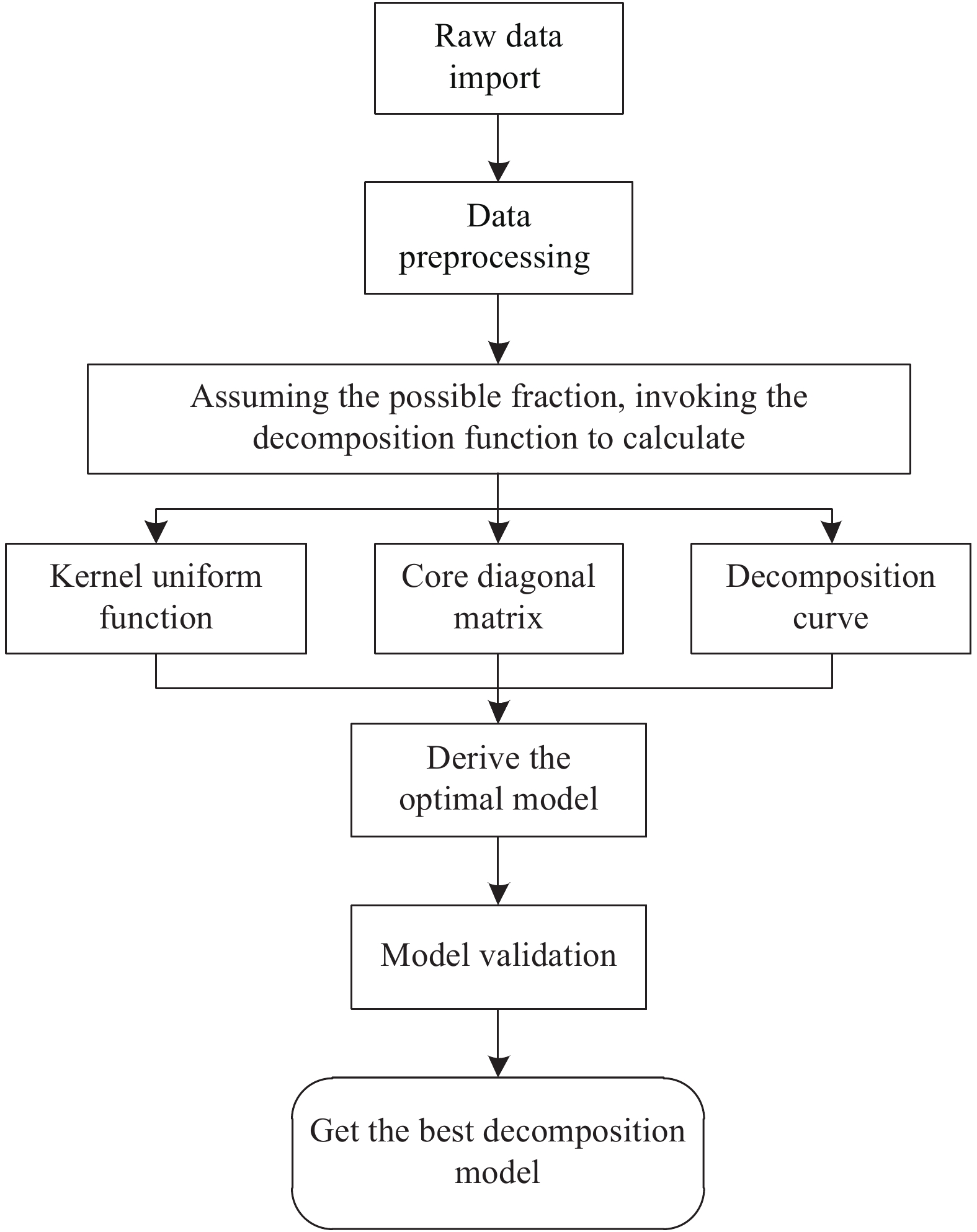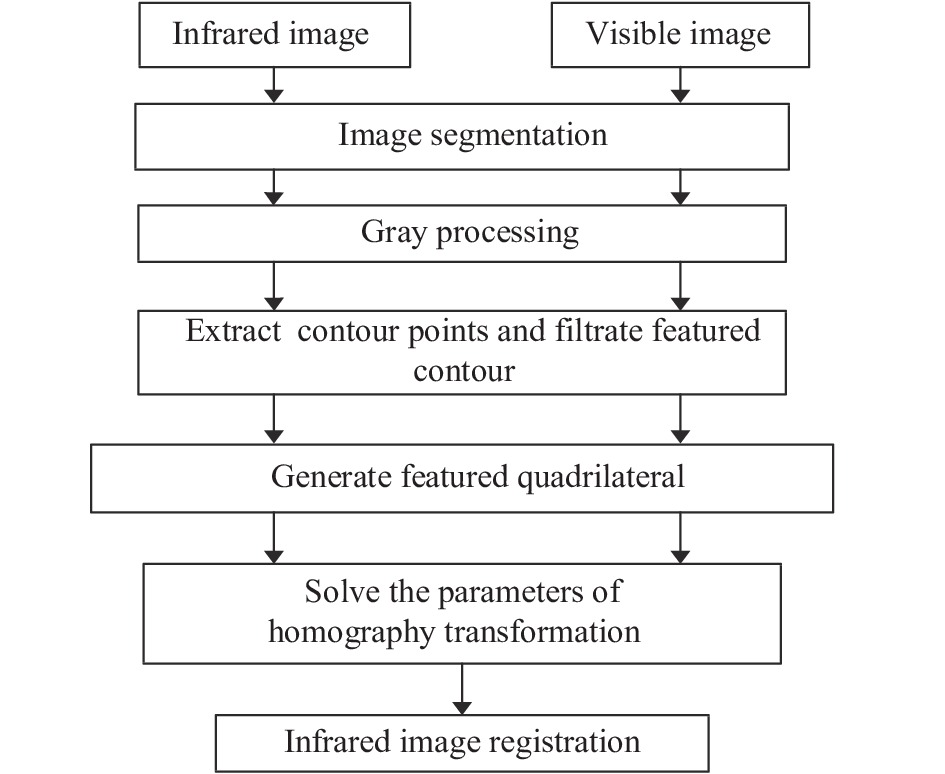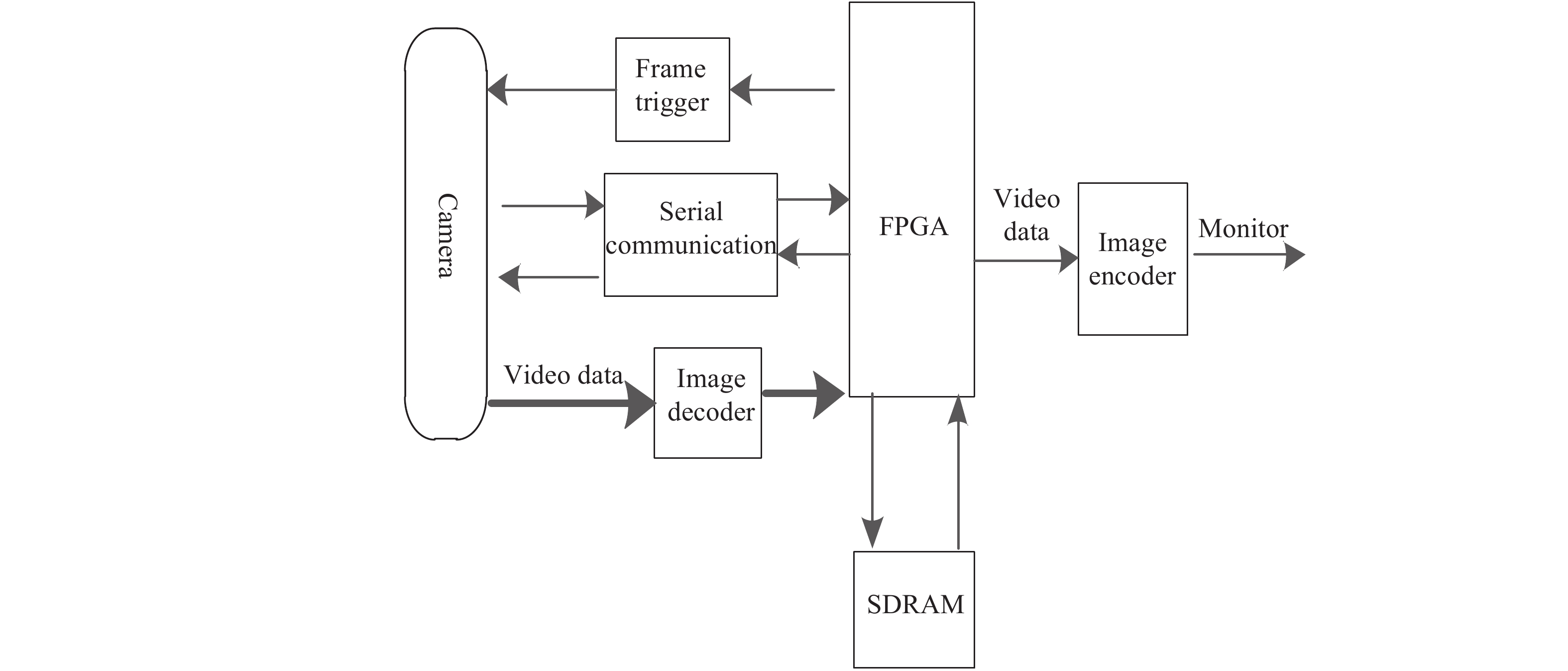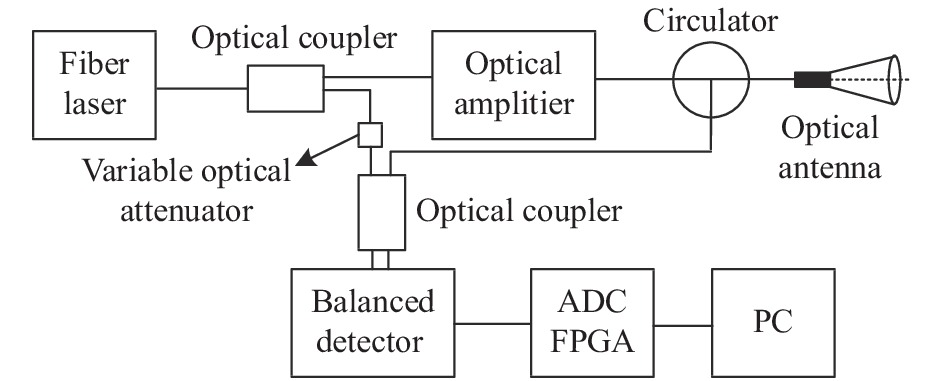2021 Vol. 50, No. S2
2021, 50(S2): 20200356.
doi: 10.3788/IRLA20200356
In order to research and design high performance optical filters, optical amplifiers, optical attenuators and total reflection mirrors, activation effect of complex defects with two ends symmetry on the optical propagation properties of photonic crystal C(AB)n(BAB)(BA)nC has been studied by computer simulation. The results show that, when C is real medium defect, there are several discrete transmission peaks with 100% transmittance in the transmission spectrum of photonic crystal with symmetrical structure. When the impurity with gain amplification effect is doped into C to form complex refractive index defect with negative imaginary part, transmittance of each discrete transmission peak in the transmission spectrum will have an amplified gain. Both the imaginary part and the real part of the complex refractive index of the defect layer can modulate the gain amplification of the transmission peak. With the increase of the negative imaginary part or real part of the complex refractive index of the defect layer, the transmission gain magnification increases first, reaches the maximum value and then decreases, and the gain magnification can reach up to 104 orders of magnitude. When the impurity with gain amplification effect is doped into C to form complex refractive index defect with positive imaginary part, transmittance of each discrete transmission peak in the transmission spectrum will have attenuation phenomenon. Both the imaginary part and the real part of the complex refractive index of the defect layer can modulate the attenuation multiple of the transmission peak. With the increase of the positive imaginary part of the complex refractive index of the defect layer, the transmittance of the discrete transmission peaks decreases until the transmittance tends to zero, and total reflection or total absorption occurs. The modulation law of symmetrical complex defects at both ends on the transmission characteristics of photonic crystals can provide theoretical reference for the research and design of new optical amplifiers, filters, attenuators and total reflection mirrors.
2021, 50(S2): 20210104.
doi: 10.3788/IRLA20210104
With the rise of the underwater thermal jet, its momentum gradually decays and evolves into a plume. Using the conventional Reynolds-averaged method for simulation is prone to the problem of excessive eddy viscosity leading to the distortion of simulation results. In order to solve this problem, the outlet of an underwater thermal jet as the research object was taken, the calculation model of an underwater thermal jet by using Partially-Averaged Navier-Stokes (PANS) method was improved, the floating-up and diffusion process under static and moving conditions were simulated, and the floating-up and diffusion law of underwater thermal jet were analyzed. A fully transparent towing tank was built, and the floating-up diffusion images of the thermal jet measured by the PLIF method under static and moving conditions were compared with the numerical simulation results. The results show that the prediction model of underwater thermal jet based on PANS method has high accuracy, all errors are within 15 %, and most of the errors are controlled within 10%.
2021, 50(S2): 20210066.
doi: 10.3788/IRLA20210066
When the aircraft is flying across the polar region, the transformation of navigation coordinate system will lead to the change of filter structure, which will affect the navigation accuracy. To solve this problem, a Ring Laser Gyroscope Inertial Navigation System/Global Navigation Satellite System (RLG INS/GNSS) polar region integrated navigation algorithm based on covariance transformation was proposed. The transformation relationship of the system error state and the covariance between the geographic coordinate system and the grid coordinate system was established. Then the integrated navigation filter with full latitude applicability was designed, and the effectiveness of the algorithm was verified by sports car experiment and semi-physical simulation experiment. The experiment results show that the covariance transformation algorithm can effectively solve the filtering instability caused by the transformation of the navigation coordinate system. Compared with the non-covariance transformation, the system state error decreases by one order of magnitude.
2021, 50(S2): 20200393.
doi: 10.3788/IRLA20200393
With the increasing of telescope aperture, the main axis driving motor is becoming larger and larger, and the segmented motor has become a hot topic in international astronomy research today. The current harmonics of the segmented Arc Permanent Magnet Synchronous Motor (APMSM) influence the tracking accuracy of the large aperture telescope. According to the mathematical model and harmonic analysis of segmented APMSM, a current harmonic suppression algorithm based on Quasi-Proportional Resonant (QPR) controller was proposed, and the current controller of unit segmented APMSM was designed. The effect of PI and the QPR controller on current harmonics from simulation and experiment was compared respectively. The experimental results show that when using QPR controller, the 5th harmonic order, the 7th harmonic order, the 11th harmonic order and the 13th harmonic order of the stator current are reduced by 63.3%, 34.4%, 51% and 59.2%, respectively, and the current harmonics of segmented APMSM can be reduced greatly, the tracking accuracy of the large aperture telescope can be improved.
2021, 50(S2): 20210109.
doi: 10.3788/IRLA20210109
In order to solve the influence of the time delay on remote control system, a new predictive system of remote-controlled mobile robot was proposed in the non-visual environment. The dynamic model of mobile robot was used as the basis, the Smith predictor was used to compensated the signal time delay between the controller and the mobile robot, reduced the positioning error caused by time delay. The grey predictor model was used to predict the value of the sensors on the mobile robot, thus reducing the remote control error caused by time delay to the operator. The feasibility of the algorithm was proved by simulation. And by the experiment of the force feedback device and the mobile robot in the non-visual environment, the feasibility of the system was proved. Although the human operator participated in the remote control experiment, the compensation effects had been clearly demonstrated.
2021, 50(S2): 20210215.
doi: 10.3788/IRLA20210215
In order to reduce the influence of the non-uniformity of the surface response of the intensity detector on the near field parameter measurement for the high-energy laser inertial confinement fusion device (ICF), a correction method for the non-uniformity of the light-intensity detector surface response in the near-field parameter measurement of the high-energy laser was proposed. Theoretically, a multi-point calibration linear correction model based on the high-energy laser near-field spatial evaluation factor was deduced, and a non-uniformity automatic correction device on surface response for high-uniformity linear output light intensity detector was designed and built. In order to verify the effectiveness of the proposed method, the surface response non-uniformity of a certain type of scientific-grade CCD was corrected. The surface response modulation degree of the detector was reduced from 1.42 to 1.08, and the contrast was reduced from 0.014 to 0.004. Compared with the two-point calibration method, the uniformity of the light intensity detector after correction using the proposed method in this article was greatly improved. The results show that this method can provide an effective technical means for the correction of the uniformity of the surface response of the light intensity detector in the parameter measurement of the high-energy laser ICF device in my country.
2021, 50(S2): 20200417.
doi: 10.3788/IRLA20200417
The range of the energy meter is limited in laser energy measurement, and it cannot take into account the measurement of energy with a large dynamic range. In the photoelectric measurement, a laser energy measurement method based on APD and PMT photodetectors was proposed. The measurement of laser energy in the 1 064 nm and 532 nm bands was compelted through analyzing the detection performance of the photodetector and its interaction with subsequent processing circuits by this method. The voltage signal changes were observed by changing the pulse width, repetition frequency, and pump power of the adjustable laser light source. The size of the photocurrent was tested according to the magnification of the transimpedance amplifier circuit. The relationship between photodetector sensitivity and laser wavelength was used to find the corresponding detector sensitivity, photoelectric conversion gain and laser attenuation multiple. The laser energy value was tested, and the pulse width, repetition frequency and pump power value of the emitted laser were compared to ensure the calculation the authenticity of the method. The experiment proves that the proposed method can complete the laser energy test with a large dynamic range nJ-mJ, and the test error is less than nJ compared with the energy meter test.
2021, 50(S2): 20210304.
doi: 10.3788/IRLA20210304
The ability of active infrared thermography to detect delamination damage in different matrix composites has not been evaluated. Two typical thermosetting/thermoplastic composite laminates were designed and manufactured in this paper. The three methods of pulse infrared thermography, ultrasonic infrared thermography, and ultrasonic C-scan were used to detect and study the delamination damage under different impact energy. The scanning results of ultrasonic C-scan were for reference, and the detection results of the two infrared thermography were compared. At the same time, a region growth algorithm based on the similarity theory of image intensity value was developed for the threshold segmentation and extraction of damaged regions of heat map sequence. Accuracy and quantitative damage identification results show that pulse infrared thermography is effective in detecting layered damage of thermoset composites, but it is not suitable for damage detection of thermoplastic composites. Ultrasonic thermal thermography is effective for both types of delamination damage of composites. It has better detection capability and overall detection accuracy is better than pulse infrared thermography. The deep mechanism of different damage detection effects was analyzed, and the evaluation process and standard of infrared thermography for the two matrix types of composites were proposed.
2021, 50(S2): 20210296.
doi: 10.3788/IRLA20210296
Damage characteristics of triple-junction GaAs solar cells irradiated by nanosecond pulsed lasers and their effects on photoelectric conversion were studied. The experimental system was established including damage morphology, voltage-current characteristics, and electroluminescence. The gradual decline characteristics of the photovoltaic performance of the cell was analyzed from the material ablation morphology, electrical performance output, and internal damage. On the basis of analyzing the influences of laser energy density, the influence of laser irradiation regions, such as the grid line part and non-grid line part of the cell, was further analyzed. Nanosecond pulsed lasers can cause obvious damage to the cell due to its high peak power. The damage effect of the grid line part of the laser was stronger than that of the non-grid line part, mainly because the function of the grid line electrode was used to collect photo-generated carrier. When the laser radiation fused the cell grid lines, which was used to collect photogenerated carriers, the output power of the cell was reduced. The research conclusions are of great significance for improving the protection capability of the solar cells.
2021, 50(S2): 20200474.
doi: 10.3788/IRLA20200474
Selective laser sintering (SLS) technology is developing rapidly and has been highly technology maturation, which can build complex insulation structures. However, it is difficult for traditional injection molding process to make some insulating parts with complex structures. Therefore, SLS technology has significant advantages in the production of complex insulating structures. However, different process parameters have great influence on the properties of samples. The density and insulation properties of nylon 12 samples under different laser powers were studied. Different laser powers were selected and the density, breakdown strength, conductivity and permittivity were taken as experimental indexes to select the optimal laser power. The mechanism of thermal oxidation degradation of nylon 12 was analyzed which resulted in the properties deterioration of samples. The results show that the density and insulation properties of samples are improved, then stabilized and degraded in the range of laser power. The optimal laser power is 9 W, the scanning speed is 3000 mm/s and the scanning spacing is 0.1 mm. The density of samples is 1.0106 g/cm3, the DC breakdown strength is 81.57 kV/mm and the conductivity is 4×10−13 S/cm.
2021, 50(S2): 20210277.
doi: 10.3788/IRLA20210277
In order to study the laser ablation propulsion performance of different metal materials, an Nd:YAG laser with a wavelength of 1064 nm and a pulse width of 8 ns was used to ablate seven common metal materials: Al, Fe, Ni, Cu, Y, Ag and Au in the atmosphere. Propulsion performance parameters such as ablation mass, impulse, impulse coupling coefficient, specific impulse and energy conversion efficiency were measured, and the influence law of laser power density on propulsion performance was obtained. The experimental results show that under the same laser power density, the ablation amount of Fe is the largest, the ablation amount of Y is the smallest. The impulse of Al, Au and Cu is larger, while that of Ag is the least. Au's impulse coupling coefficient and specific impulse mean value are the largest among the seven metals, reaching the maximum value of 40.7 μN/W and 500 s when the laser power density is $1.72 \times {10^{10}}\;{\rm{W}}/{\rm{c}}{{\rm{m}}^2}$ and ${{2}}{{.98}} \times {10^{10}}\;{\rm{W}}/{\rm{c}}{{\rm{m}}^2}$ , respectively. The average energy conversion efficiency can reach 6%.
2021, 50(S2): 20200099.
doi: 10.3788/IRLA20200099
Aiming at the problems of poor working environment, low operating efficiency, large operating error and high cost of the stacker and retractor in the enclosed stockyard, a set of intelligent control system for stacker and retractor was designed. The system was based on LiDAR technology, through the scanner to obtain stock pile surface point cloud data, the positioning system with the combination of scanner calibration was used to completethe real-time matching between the positioning sensor feedback profile data and scan data, realize the point cloud dataprocessing and 3D reconstruction of stock. Through image processing technology, the operation path was forecasted advance to guide the stacker and retractor to complete automatic operation in a enclosed stockyard. Experiment shows that the control system improves the work efficiency and reduces the operation cost.
2021, 50(S2): 20210323.
doi: 10.3788/IRLA20210323
Aiming at the problem that the evaluation of laser jamming effect is influenced by subjective experience and difficult to evaluate quantitatively, a laser jamming effect evaluation method based on deep learning was proposed. Firstly, the overall introduction of the YOLOV5 algorithm was given. Secondly, 3 020 laser jamming image from different angles and distances were produced. Then, the labeled data sets were trained to obtain the laser jamming effect evaluation model. Finally, the model was trained 300 times under the network models of YOLOV5x, YOLOV5l, YOLOV5m and YOLOV5s respectively. The experimental results show that the trained model can be used to evaluate the effect of laser interference image. The model could not only automatically label the laser interference area and evaluate the interference effect level, but also integrate the traditional strategy. It could calculate the area of the labeled area in the whole image as an auxiliary decision. The percentage of laser jamming area was automatically marked. The recognition accuracy was more than 80%, which is of great significance to the evaluation of laser jamming effect.
2021, 50(S2): 20200415.
doi: 10.3788/IRLA20200415
In order to study the characteristics of temperature field and stress field of fused silica irradiated by millisecond-nanosecond combined pulse laser, based on the theory of heat conduction and elastic-plastic mechanics, two dimensional axisymmetric geometric model was established, the numerical simulation software was used to analyze the process that fused silica irradiated by millisecond-nanosecond combined pulse laser. The temporal and spatial distribution and variation of the transient temperature field and stress field on the surface and inside of fused silica were obtained. The result shows, in the combined pulse laser, the millisecond pulse width is 1 ms, the energy is 120 J, the nanosecond laser pulse width is 10 ns, the energy is 80 mJ, Δt=1.0 ms, the best time delay for the temperature of fused silica irradiated by millisecond-nanosecond combined pulse laser, according to the different energy ratio of millisecond and nanosecond, the thermal effect of millisecond pulse laser on fused quartz and the stress effect of nanosecond pulse laser on fused quartz are obtained.
2021, 50(S2): 20210236.
doi: 10.3788/IRLA20210236
Using the energy transmitting fiber to replace the optical guide arm can greatly improve the flexibility of the medical handle, reduce the complexity of the system and improve the efficiency of laser transmission. A 2.79 μm Er, Cr: YSGG laser and its fiber coupling system were designed and developed. The influence of the output mirror of the laser resonator on the parameters of the output Gaussian beam was analyzed. A meniscus type lens was designed as the output mirror of the laser resonator to reduce the divergence angle of the laser beam, and a suitable coupling single lens was selected to meet the coupling conditions of the ZBLAN glass fiber with a numerical aperture of 0.29 and a core diameter of 400 μm. The experimental results show that when the meniscus type lens is used as the laser output mirror and the focal length of the coupling lens is 20 mm, the coupling efficiency of the laser transmission can reach up to 83%, and the maximum transmission power is 6 W, which meets the clinical application requirements of the laser medical instrument.
2021, 50(S2): 20210297.
doi: 10.3788/IRLA20210297
The ablation quality under laser micro-scale ablation is an important physical quantity for evaluating performance parameters such as specific impulse in the laser micro-propulsion system. Based on the ablation pit image obtained by the scanning electron microscope, a micro-scale ablation pit shape three-dimensional model reconstruction algorithm was established based on the gray-scale surface reconstruction method; In view of the effect of image noise, the image was segmented and smoothed, which effectively solved the effect of quantization error and grayscale blur on the reconstructed shape, and realizeing the ablation pit volume estimation. The results show that the proposed method can quickly and effectively reconstruct the three-dimensional shape of ablation pits under laser micro-scale ablation, and then calculate the ablation quality.
2021, 50(S2): 20210539.
doi: 10.3788/IRLA20210539
GF-7 satellite is equipped with the first laser earth observation altimeter with full waveform recording ability in China, which can obtain a wide range of high-precision three-dimensional coordinates, and its positioning accuracy is highly dependent on the measurement accuracy of laser pointing angle. According to the characteristics of data, a centroid extraction algorithm of ellipse fitting spot with threshold constraint was proposed, and a long-period pointing angle stability monitoring system was established. Firstly, the threshold method was used to determine the edge of the laser spot contour. Secondly, the influence of porosity and noise was eliminated through corrosion operation. Then, the shape of the laser spot was further constrained by ellipse fitting, and the characteristic parameters of the laser spot were preserved. Finally, the centroid coordinates were extracted by using the gray gravity center method. The experimental results show that the centroid position of the spot changes within 1.4 pixel, and the corresponding pointing angle changes within 0.434″ per month, which is relatively stable. The related algorithms and conclusions in this paper have certain reference significance for the development of laser altimetry satellites and the monitoring of pointing stability in China.
2021, 50(S2): 20210264.
doi: 10.3788/IRLA20210264
The migration mechanism of the target material in the millisecond laser drilling process directly affects the morphology of the hole. Therefore, the study of it was of great significance for the optimization of laser parameters. The migration of the material includes the migration of off-target gasification products, sputtered molten materials and non-off-target molten materials, and the molten materials was re-solidified to form the recast layer. For the off-target material, the high-speed camera was used to observe the movement law; For the recast layer, the metallurgical microscope was used to observe its morphology; Finally, the mass loss was measured with an analytical balance. The results show that the phase explosion threshold of aluminum alloy is 1 047.24 J/cm2. When the energy density is below the phase explosion threshold, the off-target material mainly migrates in the form of vaporization, and form circumferential and radial cracks. When the energy density is above the phase explosion threshold, the molten material is washed out of the ablation hole, and there is almost no recast layer inside the hole. The quality of gasification loss is very small. The mass loss mainly comes from the melt splash driven by the phase explosion. The phase explosion increases the single-pulse ablation quality by 10.7 times. Both the phase explosion and the decrease of laser intensity cause the vaporization rate of the target material to decrease.
2021, 50(S2): 20200198.
doi: 10.3788/IRLA20200198
There are a great amount of space debris discarded in the orbits around earth. This pollution in space caused by people's spaceflight has threatened the space assets seriously. Some of the debris with the diameter ranging from 1 to 10 cm, should be given priority treatment for processing, due to the latent but fatal threat they induced. Laser space debris removal is becoming an absorbing topic in the realm of science. Among the mechanisms presented, space-based pulsed laser is one of the effective method to eliminate these small debris. Due to the limitation of technics, the short-pulsewidth, great-energy, compact-structure and reliable lasers claimed in the plans reported were hard to be achieved. A creative debris-removing method using space-based free running pulsed laser was proposed. The long pulse duration of the laser advantaged the impulse generation was revealed in a numerical analysis. Comparing with nanosecond pulsewidth laser, both in theory and experiment, "hot metal vapor ejection" was proved to be better than "plasma ejection" at impulse increment and energy utilization. Analyzing with a laser-melting-metal model proposed, the diameter of metal drops ejected were calculated less than 60 μm in general, with the laser power density greater than 5×106 W/cm2. The result demonstrated that the "micro pieces" accompanying the ejection were unable to cause "secondary threat", but accelerated the debris removing in some degree. The study lays the foundation for the application of space-based free running laser in space debris removal.
2021, 50(S2): 20210305.
doi: 10.3788/IRLA20210305
The regular characteristics of the transient response of a silicon-based PIN photodiode were stuidied experimentally, which irradiated by an ultrashort pulse picosecond laser, and the pulse response signals under different laser energy densities were measured. The analysis and experiment results show that with the increase of laser energy density, the device appeares a non-linear saturation state. The FWHM is from 37.2 μs to 113 μs, and the bottom width is from 181 μs to 322 μs. The impulse response signal has a broadening phenomenon, and the signal broadening means that the transient response of the device is degraded. At the same time, the analysis of the half-height width and the bottom width of the signal characteristics before and after saturation shows that whether it is an absolute increase or a relative increase, it can be seen that there is a more significant broadening phenomenon after saturation. It is caused by the attenuation of the speed on the falling edge after the device is saturated. Through theoretical analysis, the change in the concentration of injected photogenerated carriers affects the bipolar transport process, thereby changing the speed of the carrier transport process, resulting in degradation of the device response.
2021, 50(S2): 20210035.
doi: 10.3788/IRLA20210035
RF power supply is an important component in RF-CO2 laser. During the development of a new RF-CO2 laser, due to the mismatch between the laser load and the RF power supply, the power tube of the RF power amplifier is easy to break down and burn out in the debugging process. In order to solve this problem, a RF power supply monitoring platform for RF-CO2 laser, which integrated data acquisition, automatic protection control and visualization technology, was designed. The platform adopted a combination of software and hardware, a control module was embedded in the RF power supply, a data acquisition system and automatic protection system were set up, and combined with the circuit design software platform, the RF power supply data acquisition and protection control was completed. The experimental test shows that the platform can effectively avoid the damage of the power tube of the RF power supply, realize the automatic protection of the RF power supply, complete the data acquisition and remote protection control of the RF power supply system, shorten the debugging period of the RF-CO2 laser, and improve the development efficiency of the whole machine.
2021, 50(S2): 20210362.
doi: 10.3788/IRLA20210362
In order to solve the problem that the selection process of the number selection of model factors in the decomposition of three-dimensional fluorescence spectrum by parallel factor algorithm is not clear, an improved factor number selection process composed of core diagonal matrix, kernel uniform function and constant wavelength residual graph was proposed. The improved parallel factor analysis algorithm was developed to verify the accuracy of factor number selection process with humic acid as detection material. The results show that, combined with the above process, when the excitation light and emission light are in 350-450 nm/350-620 nm, respectively, and the factor number is 4, the core diagonal matrix distribution meets the demand, the kernel consistent function is 52%, the residual error of the fitting diagram is the smallest, and the decomposition effect is the best in the standard region. Compared with using a single method, the above combination process is more logical and accurate, and can quickly determine the number of factors in practical application. The four factors are two humic acid factor A located at 360-370 nm/450-500 nm and 350-360 nm/450-500 nm, one humic acid factor C located at 365-375 nm/475-525 nm, and one soil fulvic acid factor located at 380-390 nm/475-525 nm. When the concentration increased from 20 mg/L to 200 mg/L, the composition and contribution rate of the factors has little difference, that is, the change of concentration did not change the properties of the solution.
2021, 50(S2): 20210298.
doi: 10.3788/IRLA20210298
In the field of public opinion monitoring in minor languages, it is difficult to obtain annotated corpus in minor languages, resulting in poor practice of deep learning. It is difficult to extract the core opinions of the information published by the private and the media for further analysis of public opinion. Taking Vietnamese as an example, a method for extracting Chinese-Vietnamese news opinion sentences that incorporated shared topic features was proposed. The problem of scarcity of small language resources was solved with the help of sufficient Chinese annotation corpus, and the topic information was used to shared between bilingual comparable corpora. It could optimize the extraction effect, and then enhance the public opinion monitoring effect. First, the topics of Chinese-Vietnamese comparable news were extracted separately to construct shared topic features through LDA topic modeling; then, the bilingual word embedding model was trained to achieve shared semantic spatial representation of Chinese and Vietnamese; Finally, the features were integrated with word vectors for combining semantic information with topics, emotion and location information to enhance the effect of extracting consequent. The experimental results in the Chinese Vietnamese comparable news dataset show that the integration of shared topic features can improve the extraction of Chinese Vietnamese news opinion sentences, the value of F1 is 0.721, which supports the monitoring of public opinion in minor languages.
2021, 50(S2): 20211057.
doi: 10.3788/IRLA20211057
The offshore booster station adopts the rail hanging robot to carry out patrol inspection, and the machine vision method is used to automatically identify the digital instrument reading instead of manual recording. An automatic recognition algorithm of digital instrument reading based on Mask-RCNN deep learning method was presented. The original images of different types of digital instruments were made into data sets, trained by deep learning algorithm, the parameters of the algorithm were optimized according to the change curve of loss function, the trained model was obtained, and then the digital instrument images were recognized and analyzed. The gray world algorithm and Hough transform were used for image preprocessing, which can effectively improve the accuracy of digital recognition. Finally, the recognition performance of YOLOv3 and Mask-RCNN deep learning algorithm was compared in the experiment. The results show that the former has higher detection speed and the latter has higher accuracy. The recognition rate of the latter is 99.52%, it meets the requirement that remote monitoring of offshore booster station requires high accuracy of digital instrument reading.
2021, 50(S2): 20200520.
doi: 10.3788/IRLA20200520
The fusion analysis of thermal infrared image and visible image is widely used in intelligent security and fault detection. To solve the problem that it is difficult to match two images in the fusion process in the same scene, an image registration method based on featured contour quadrilateral was proposed. Firstly, the thermal infrared image and the visible image were filtered separately by segmentation algorithm. Secondly, the contour points were detected and the contour was redrawn. Then the featured contour was filtered out by the algorithm and the polygon was approximated, and the minimum circumscribed quadrilateral of all contours was generated. The vertexes of this quadrilateral was substituted to calculate the improved homography transformation parameters, and the deviation value of displacement variable was added to neutralize the error of 80%. Finally, the thermal infrared image was registered through the homography transformation model. The experimental results show that this method effectively reduces the matching error, makes the contour positioning more accurate, and can achieve high-precision and rapid image registration.
2021, 50(S2): 20200211.
doi: 10.3788/IRLA20200211
According to the real demand of image real-time storage display and real-time tracking display for large field of view and high-speed camera, which was with Camera Link interface, a large field of view image acquisition and SDI display system based on FPGA was designed. FPGA EP2S90F1020 of Altera Company as the core processor and two pieces of SDRAM MT48LC4M32 were used. A method of image real-time zooming based on FPGA and real-time conversion of Bayer format color image to SDI display was proposed. The real-time display of large field of view color video image, which was Camera Link interface, was realized on SDI video image. The experimental results show that the design method can convert the 2 048×2 048, 100 Hz video image of Camera Link interface into $1\;920 \times 1\;080$ , 25 Hz or $1\;280 \times 720$ , 25 Hz, or $720 \times 576$ , 50 Hz SDI display in real time. In the FPGA environment, the whole image processing time is 8.7 ms, which meets the real-time requirements of the system, and provides an effective implementation method for the real-time display of large field of view video image in embedded system.
2021, 50(S2): 20210467.
doi: 10.3788/IRLA20210467
In order to meet the requirements of wind speed measurement in wind field, a high-speed signal acquisition and processing module of lidar wind measurement system based on FPGA has been developed, which was responsible for lidar echo signal acquisition, Fast Fourier Transform (FFT) and spectrum data accumulation and averaging operation. The collected 1 024 point echo data was calculated by flow mode and block floating-point structure FFT to obtain single spectrum data and 1 024 cumulative average spectrum data respectively, and the data transmission module was reliably transmitted to the host computer for display and analysis. By building a continuous coherent lidar wind measurement system with the working wavelength of 1 550 nm, the index of the signal acquisition and processing module was tested and the cumulative average filtering algorithm was verified. The experiment results show that the acquisition and processing module can meet the real-time acquisition and processing of echo signal under the 100 MHz clock, and the spectrum resolution reaches 97.66 kHz, and the accuracy of wind speed measurement is improved to 7.57 cm/s.







